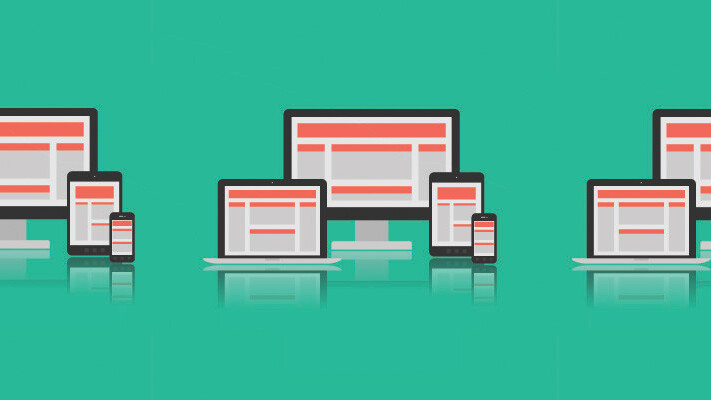
Nic Newman is the MD EMEA and Head of Strategy at Tigerspike, a company helping transform businesses all over the world by unlocking the power of Personal Media (connected devices).
In 2010, many people thought Redmonk’s Stephen O’Grady was spot on when he proclaimed “Developers are the new Kingmakers” in an article that later became a successful book.
Back in 2010, almost everyone agreed, but just before the global coronation of software developers, the user experience (UX) designers united in protest, saying, “hang on, you are nothing without us! You are just coding the amazing user experiences that we have designed!” There is still tension between UX designers and software developers, which borders on sibling rivalry.
To be fair, there were not many digital designers, let alone UXers, in the world before 1999. Everything has changed in the last 15 years. Design is now generally considered just as important as technology. User experience design (UX design) has become the key to success. In fact, it is now hard to imagine any grown up company without UXers on board.
UX designers stole back their crown in 2011. The coup was, of course, led by Sir Jony Ive of Apple. To add insult to the loss of their grand title, Apple gave Sir Jony a leadership and directional role over Apple’s software teams. A Senior VP of Design was now running the dev guys? Surely, it was all over.
It seemed as though nobody could ever pose a threat to the reign of UX designers. Companies like Airbnb were attributing the success of their mobile apps to design an amazing user experience. There would be no return.
But wait. Will 2014 see the developers strike back and reclaim the throne?
There are some very interesting developments on the horizon in the world of all things mobile. Technology that allows for new software approaches will empower developers, reducing their need for UX involvement. Stories of tech automation are rife, in which robotics and artificial intelligence are moving into design. The New York Times reports computer programs are pushing experience architects out.
But we are talking about mobile apps here, that Holy Grail where great design meets great software to create something truly engaging, like The Economist on the iPad. Importantly, the world in 2014 has some powerful forces pulling these two roles in new and different directions:
1. A fresh way of working in a new era – continuous productivity
The culture of continuous productivity enabled by mobile technology will lead to a rewrite of the past years of management doctrine post Drucker. Hierarchy, top-down decision making, strategic plans, static competitors, single-sided markets are now old views in a world literally flattened by the presence of connectivity, mobility, and data.
The impact of continuous productivity will re-architect the organisation, individuals and teams. The social and mobile aspects of work will gain support of digital tools, and with those tools the realisation of just how much of nearly all work processes are socially dominant and intrinsically mobile.
2. It’s all going ‘mobile first’ – more rapidly than we realise
It was all about email on the move, but it’s now about deep tasks being simplified or enhanced by the ability to do them synchronously while using other devices or remotely while away from the main “workstation”.
Mobility will come to be the favoured form factor for almost everything for everyone. Building plans for construction, presentations for sales execs, spread sheets for analysts, or deep analysis for engineers are examples that will transition in part to mobile to improve flexibility, productivity and multi screen capability.
The value of being able to make progress anywhere, any time and on any device will mean all enterprise apps will soon need to be mobilised.
3. Software with memory, awareness and predictive intelligence
People are already expecting their interactions with services to be smart and able to remember choices, learn preferences, and predict what comes next. As an example, location-based services will extend to all mobile interactions, where the value of location can improve the overall experience by providing context and therefore relevance.
The user experience will modify over time of day and of duration of usage – not because the design changes, but because the apps software learns our behaviour and will adapt dynamically.
4. Mobile is pushing aging web architectures to the brink
The three-tier architecture built for a browser-led PC world can’t flex, scale, or respond to the needs of a good mobile experience, or the emerging requirements for connected products. Mobile’s volatility and velocity of change require a distributed four-tier architecture that is likely to be termed an “engagement platform”.
An engagement platform will separate technical capabilities into four parts: client, delivery, aggregation, and services. In 2014, it will be time to throw out the old notion of a three-tier architecture – presentation, application, data – and replace it with a four-tier engagement platform that can handle the new demands of new technology driving a greater focus on the software side of UX.
So, who will be king?
The result of the first two trends is a massively increased demand for apps; however, a quantum increase in the number of apps will not be followed by a quantum increase in budgets. Enterprises will lean on standardised UX and software-based UX to be able to satisfy app demand.
Trend 3 will dictate that apps become more dynamic and trend 4 will lead to more dependence on smarter software. These combined “pressures” will mean that the developer will be suddenly more powerful and required to place more UX capability into his software toolkit. He will become king again, leading to a more UI developer/engineer-led technology world in 2014 and beyond. The software developer will become the big brother in this next chapter of ongoing sibling rivalry.
All said, I still don’t believe you can ever allow technological aspirations to lead a successful product design process over user needs. If you are building anything, it should be built on insight gained through a deep understanding of end users. Consumer first, tech second, as Steve would have said.
This doesn’t mean that a product design project can’t be developer-led, as long as the developers are thinking like the end user and asking for support from researchers and interaction designers when they need it. Long live the king!
Image credit: LuckyDesigner/Shutterstock
Get the TNW newsletter
Get the most important tech news in your inbox each week.




